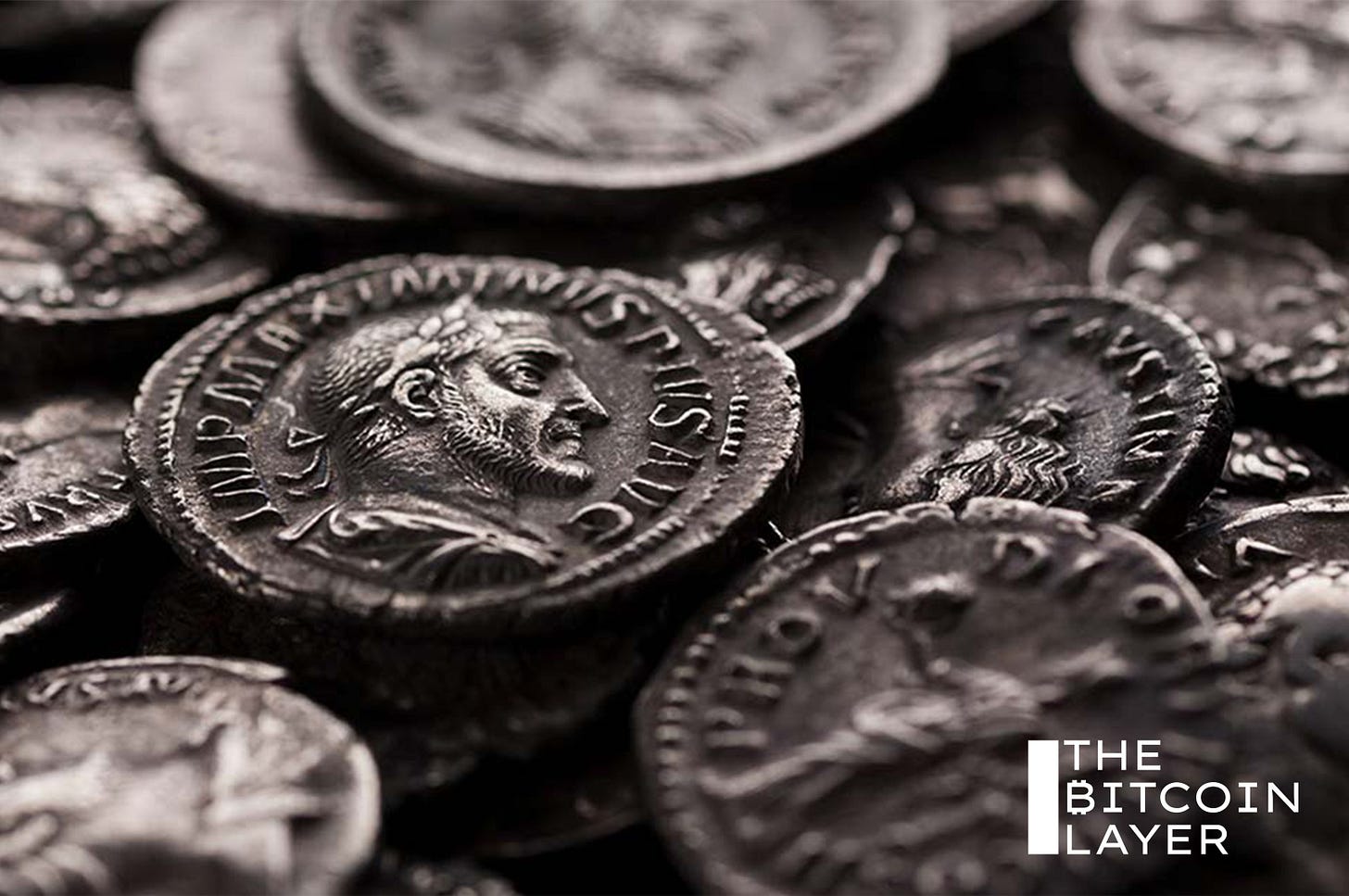Why QE is a lock
We don’t have a take on the Super Bowl spread, but there is one sure bet out there.
Dear readers,
Last night, while teaching the monetary history and plumbing portion of my fixed income course at USC, I brought up the classic example of the Roman Empire devaluing its currency by replacing a coin containing 98% silver with one containing only 5% silver over the course of centuries. Through this process, the state is stealing money from its lenders because when it pays back debt in coinage, each coin is worth less than each coin borrowed (due to the reduced precious metal content). “Isn’t this what the Fed does when it creates currency during QE?”, a student asked. An insightful question without a straightforward answer. It inspired me to write more about today’s QT period and why, mathematically speaking, I don’t see an alternative to eventual QE. Got bitcoin?
River is our Bitcoin exchange of choice.
Securely buy Bitcoin with zero fees on recurring orders, have peace of mind thanks to their 1:1 multisig cold storage custody, and withdraw at any time. Need help? They have US-based phone support for all clients.
Now introducing River Link 🔗allowing you to send Bitcoin over a text message that can be claimed to any wallet. Give a gift, pay a friend for dinner, or orange pill your friends, completely hassle-free.
Use River.com/TBL to get up to $100 when you sign up and buy Bitcoin.
QE is an asset swap
First things first, let’s address if QE can be described as “printing money.”




